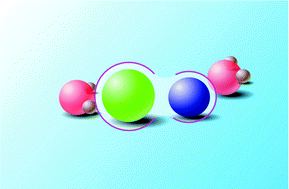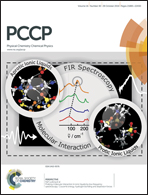A continuum solvent model of ion–ion interactions in water
Abstract
The calculation of ion–ion interactions in water is a problem of long standing importance. Modelling these interactions is a prerequisite to explaining Hofmeister (specific ion) effects. We here generalize our solvation model of ions to calculate the free energy of two ions in water as a function of separation. The same procedure has previously been applied to calculate ion interactions with the air–water interface successfully. The Conductor like Screening Model (COSMO) is used. This treats the ions on a quantum mechanical level and calculates numerically the electrostatic response of the surrounding solvent. Estimates of the change in the cavity formation energy and the change in the ion–water dispersion energy as the ions approach are included separately. The calculated interaction potentials are too attractive and this is a significant issue. However, they do reproduce the affinity of similarly sized ions for each other, which is a crucial property of these potentials. They are also oscillatory, another important property. We normalize the potentials to reduce the over-attraction, and good correlation with experimental values is achieved. We identify the driving contributions to this like-prefers-like behaviour. We then put forward a plausible hypothesis for the over-attraction of the potentials. An agreeable feature of our approach is that it does not rely on salt specific parameters deliberately adjusted to reproduce experimental values.


 Please wait while we load your content...
Please wait while we load your content...